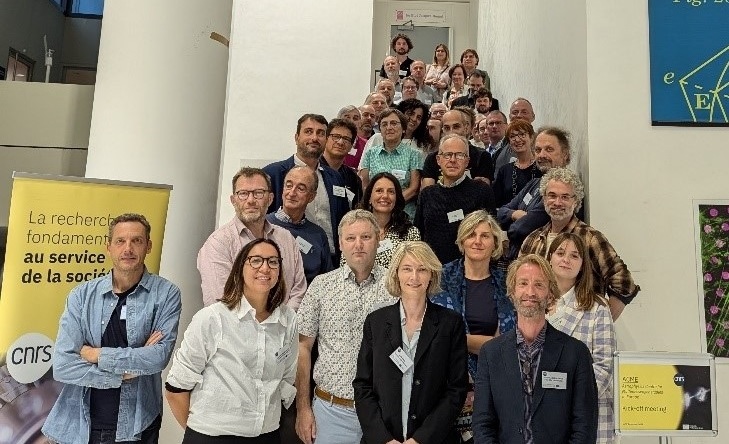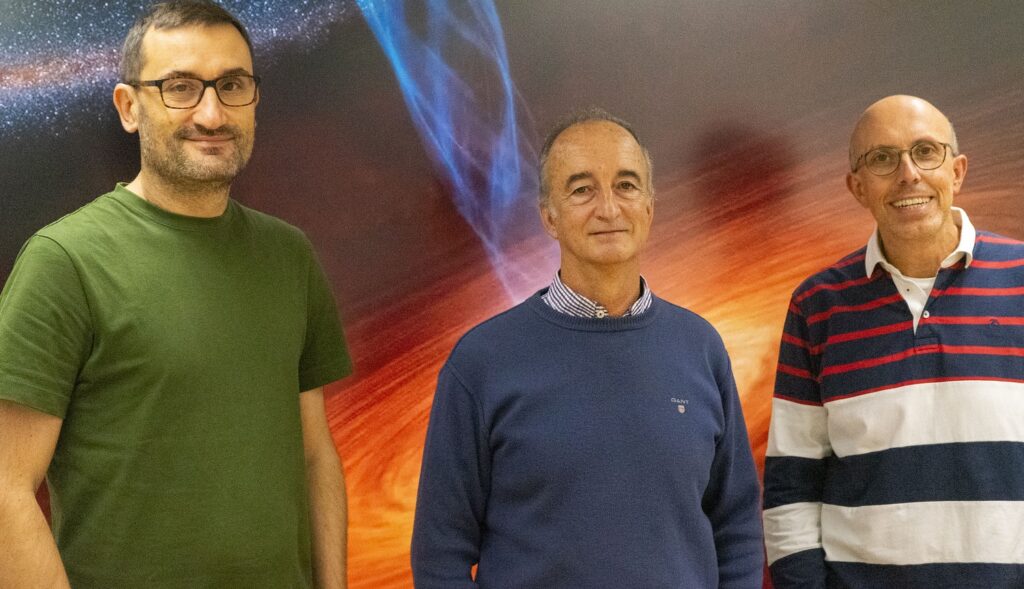Staff from the Instituto Galego de Física de Altas Enerxías (IGFAE) will be part of ACME for the next few years, a European collaboration that aims to improve accessibility and cohesion between the most relevant observatories for research in astronomy and particle (or astroparticle) astrophysics. Thus, under the framework of ACME (acronym for ‘Astrophysics Centre for Multimessenger Studies in Europe’), access to and exchange of information on research infrastructures, instruments, data and scientific knowledge will be facilitated.
IGFAE in the new age of multi-messenger astronomy
The IGFAE, a joint centre of the University of Santiago de Compostela and the Xunta de Galicia, joins this project through its participation in the Pierre Auger Observatory. This huge facility, consisting of more than 1,600 detectors located in an area of 3,000 km2 on a plain in the province of Mendoza (Argentina), is the largest and most precise infrastructure designed to study ultra-high energy cosmic rays, one of the most energetic particles in the universe. Enrique Zas, who is part of ACME and the IGFAE team at the Pierre Auger Observatory, says: ‘We are responsible for ‘multi-messenger’ events, combining Pierre Auger’s sensitivity in detecting cosmic rays, neutrinos and photons with data from other observatories to study astrophysical objects and cosmic events in a new way.
Given the revolution in the observation of the cosmos, multi-messenger astronomy – which is the focus of the ACME project – is opening a new window to observe the universe. Thanks to technological progress in recent years, it is now possible to observe the same cosmic event with different signals, or messengers, such as electromagnetic radiation, gravitational waves and neutrino or cosmic ray emissions. This complementary information helps to understand the complex high-energy mechanisms that take place in these events.
In recent years, through its research area in Cosmic Particles and Fundamental Physics, the IGFAE has taken on tasks of responsibility in projects such as the Pierre Auger Observatory (where the researcher Lorenzo Cazón is scientific coordinator and Jaime Alvarez-Muñiz is responsible for the detection of neutrinos and photons). The Institute is also part of the LIGO collaboration for the study of gravitational waves, or the NEXT or DUNE neutrino experiments.
About ACME

Reunión de inicio do proxecto ACME, celebrada en París os días 16 e 17 de setembro.
ACME was launched on 16-17 September at a meeting in Paris. This project, funded with 15 million euros, involves 40 leading institutions in 15 countries, with the aim of strengthening collaboration at different levels to better identify potential astrophysical events and optimise their observation and monitoring. In this way, the recommendations of the roadmaps of the European Astroparticle Physics Consortium (APPEC) and the Advisory and Planning Network for European Astronomy (ASTRONET) are put into practice.
ACME is coordinated from the Centre National de la Recherche Scientifique (CNRS), France, directed by Prof. Antoine Kouchner (CNRS) and co-directed by Paolo D’Avanzo, from the Istituto Nazionale di Astrofisica (INAF), Italy, representing each community to ensure balance and drive cross-domain collaboration. IGFAE researchers Enrique Zas, Jaime Álvarez-Muñiz and Lorenzo Cazón are also involved.
